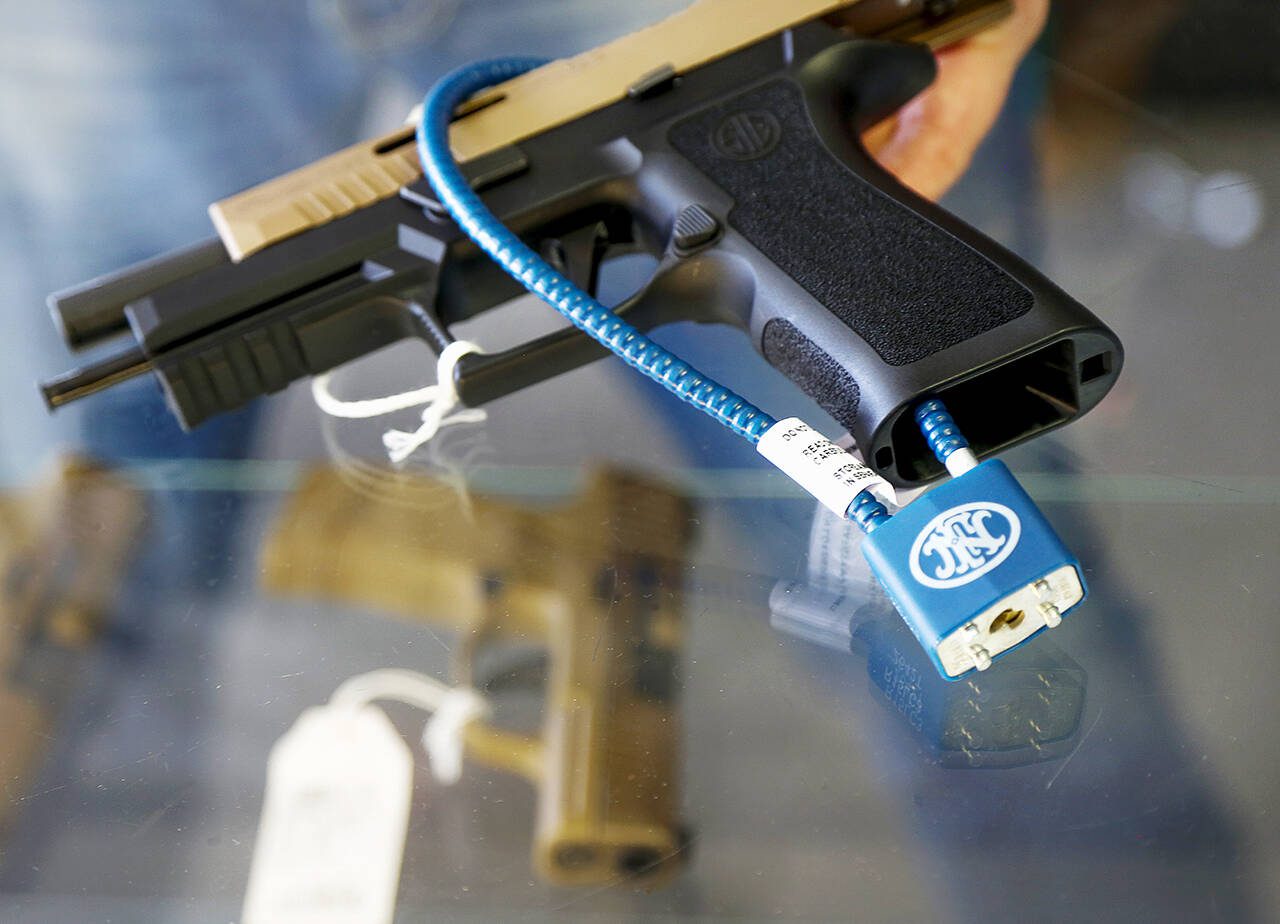By The Herald Editorial Board
Over the last 10 years, Washington state, through legislative action and citizen initiative, has adopted some of the nation’s strictest firearm safety laws.
Among those are restrictions on high-capacity ammunition magazines, a ban on the sale of so-called assault-style weapons, universal background checks for gun purchases and a red-flag law that allows law enforcement or family members to seek a court order that temporarily removes guns from those deemed a danger to themselves or others.
The state ranks 15th among the 50 states in terms of fewest firearm deaths per capita — 12.4 per 100,000 with 1,022 firearms deaths in 2022 — according to the most recent figures available from the U.S. Centers for Disease Control and Prevention. But that rate has slowly increased in recent years, from a low of 9 per 100,000 in 2016, reflected in overall deaths by firearms increasing 34 percent in the state between 2014 and 2023, compared to a 33 percent increase nationwide.
A large majority of those deaths — about 70 percent — are by suicide, while about 27 percent are homicides.
Grades from the Giffords Law Center, which advocates for gun violence prevention, gives Washington state an A-minus based on the strength of its laws and firearm death statistics, compared to that of New York’s grade of A, with a significantly lower death rate of 4.7 per 100,000 in 2023.
Yet, such grades are meaningless next to the statistics themselves, prompting state lawmakers this year to again pursue firearm safety legislation, including House Bill 1163, which was passed out of the House last week and now is being considered by the Senate’s Law and Justice Committee.
The legislation would bar the sale or transfer of firearms without a valid permit to purchase a firearm and proof of completion of a required firearms safety course, approved by the Washington State Patrol, including live-fire training.
The intent, said state Rep. Darya Farivar, D-Seattle, one of the bill’s sponsors, is to “ensure that everyone who decides to purchase a firearm understands the capabilities of the machinery. It will ensure people understand that this machinery can rob people of their safety, their freedom and their lives.”
Research by the Johns Hopkins Center for Gun Violence Solutions finds that while background checks can be effective in reducing deaths and injuries, pairing that requirement with permit-to-purchase licensing can help close loopholes left by less-stringent laws, precisely because permitting laws typically require training courses and other security measures as well as a waiting period between application and purchase of a firearm.
The research points to the experiences of two states as to why training and a permit requirement can be effective in improved firearm safety and a reduction in firearm deaths:
Connecticut’s 1995 handgun permit law was associated with a 28 percent reduction in its rate of firearm homicides and a 33 percent reduction in firearms suicides between 1996 and 2017.
While the repeal of a handgun licensing law in Michigan in 2007 was associated with a 25 percent increase in the firearm homicide rate in the three years following the repeal, and a 16 percent increase in firearm suicides over the five years after repeal.
Additionally, the passage of a permit-to-purchase law in Maryland was credited with a 75 percent reduction in the number of guns originally purchased in that state, then confiscated by law enforcement during criminal investigations.
Importantly, firearms training, offering practical training in the use of firearms as well as information on safety storage and handling, can help reduce the incidence of accidental shootings and tragic occasions when children discover a gun that is left loaded and unsecured.
Opponents of the legislation have chiefly focused on the absolutist school of thought that the Bill of Rights’ Second Amendment — “that the right of the people to keep and bear arms, shall not be infringed” — allows no restriction. But even conservative U.S. Supreme Court justices — chief among them, the late Justice Antonin Scalia — saw limits to that right, as there are with all rights.
In District of Columbia v. Heller, a 2008 case where a 5-4 majority ruled against a law regarding handgun registration, Scalia offered some moderation in joining the majority opinion: “Like most rights, the right secured by the Second Amendment right is not unlimited. … [It is] not a right to keep and carry any weapon whatsoever in any manner whatsoever and for whatever purpose.”
“In any manner” would seem to allow the consideration of restrictions; if not the registration of handguns, then the training and licensing of the owners of firearms.
While it’s common to think of instances of mass shootings and other homicides when discussing firearm violence, the far higher incidence of firearm suicides should tip the scales toward adoption of required training and a permit-to-purchase law.
The Johns Hopkins study found a reduction in suicides because of the delay in obtaining firearms, especially for first-time gun purchasers.
As well, research by KFF found that more than twice as many suicides by firearm occur in states with the least-stringent firearm laws, relative to those with more restrictive laws. While acknowledging other factors might be at work, KFF’s research concluded that suicides by firearm were highest in states with the fewest number of firearm laws (10.8 per 100,000) as compared to the rate in states with the highest number of firearm laws (4.9 per 100,000).
In a state where in 2019 there were 637 firearm suicide deaths, including those of 38 children and teens, the delay and consideration that would have to go into a gun purchase that required training and permitting strongly argues for the legislation.
Talk to us
> Give us your news tips.
> Send us a letter to the editor.
> More Herald contact information.

























